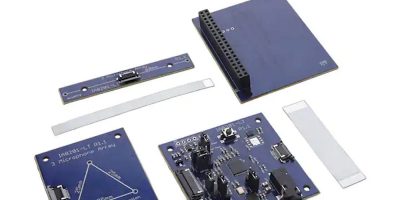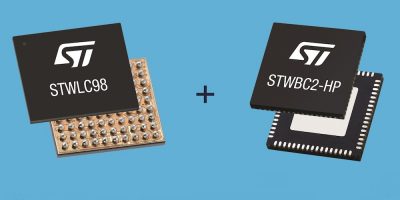Hardware, add on open software and algorithms required to test, prototype and debug voice and audio functionality are provided in a development kit available from Knowles. The Raspberry Pi development kit enables voice integration for smart home, machine learning, consumer technology, industrial and other IoT applications.
The Knowles AISonic IA8201 Raspberry Pi development kit to brings voice, audio edge processing and machine learning (ML) listening capabilities to devices and systems. It can be used by product designers and engineers as a single tool to streamline design, development, and testing of technology for voice and audio integration.
The kit is designed to be a fast way to prototype innovations which address emerging use cases including contextually-aware voice, machine learning listening, and real-time audio processing. All of these require flexible development tools to accelerate the design process, minimise development costs and leverage new technological advances, says Vikram Shrivastava, senior director, IoT marketing at Knowles. “By selecting Raspberry Pi as the system host, we are opening up the ability to add voice and ML to the largest community of system developers that prefer a Linux or Android environment.”
The kit is built around the Knowles AISonic IA8201 audio edge processor OpenDSP, for low power and high performance audio processing. The audio edge processor combines two Tensilica-based, audio-centric DSP cores. One is for high power compute and AI / ML applications, and the other for very low power, always on processing of sensor inputs. The IA8201 has 1Mbyte of RAM on-chip that allows for high bandwidth processing of advanced, always-on contextually-aware machine learning use cases and memory for multiple algorithms.
Using the Knowles open DSP platform, the kit includes a library of on-board audio algorithms and AI/ML libraries. Farfield audio applications can be built using the available low power voice wake, beamforming, custom keywords, background noise elimination, from Knowles’ algorithm partners such as Amazon Alexa, Sensory, Retune and Alango, to support a wide range of voice and audio customisation. The kit also features TensorFlow Lite-Micro software development kit (SDK) for fast prototyping and product development for AI / ML applications. The TensorFlow-Lite SDK allows for porting models developed in larger cloud Tensor Flow frameworks to an embedded platform usually with limited compute and lower power consumption at the edge, for example, AI inference engines for verticals such as industrial and commercial.
The kit has options for either two or three pre-integrated Knowles Everest microphones and two microphone array boards to help select the appropriate algorithm configurations for the end application.
Developer support is available through the Knowles Solutions Portal for configuration tools, firmware and algorithms that are supplied as standard with the kit.
The Knowles IA8201 Raspberry Pi development kit is now available for order.







